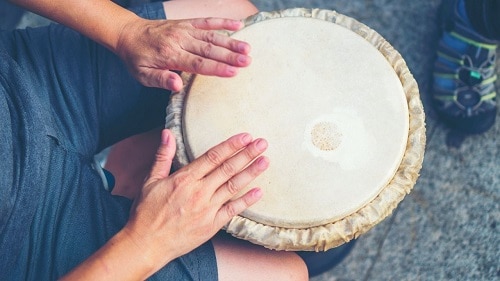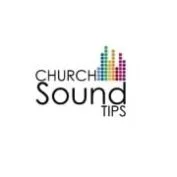First seen around 400-800 years ago, a Djembe is a percussion instrument originated in Africa. These drums are traditionally made of African wood which is covered with an animal skin as a drumhead. With its beautiful sound, it decorates many songs of today and with his specific stamp in percussion parts, you can easily recognize it within different genres of music, and found more and more in worship music too. It is played with the hands, striking to top skin of the drum, and also hitting the rim of the drum to get different tones like many other types of percussion. It does bare some similarities to conga drums, except it is much bigger. You can easily fall in love with this interesting, wonderful sounding drum, but there is another side of the coin with this drum. Miking up the Djembes for for recording or live perfromance, like other percussion instruments and drums, is not that simple as put mic here or there and that is it.
Some potential difficulties
Because a Djembe is most often played by placing in the lap between the thighs, micing is not that simple process as it would be if placed on a stand. Drum placement, mic placement and a boomy sound of the base from the bottom microphone are main difficulties when micing Djembe. First of all, a Djembe can not be placed on the floor if you want it to sound good and not muffled. You need to lift it if you want it to produce its natural sound. For the bottom microphone, you shouldn’t use a condenser mic, the dynamic is a much better choice. Either regular mic, such as the legendary SM57 microphone, or if you are equipped with any kick drum mic, or percussion mike, even better. Adjust gain, and experiment with EQ.
You should be able to cut some of the unwanted frequencies to achieve maximum sweetness of your drum. Since Djembe dram head sizes vary from 7 to 14 inches, sometimes micing can be tough. especially for the little ones. If you play a 14 inches Djembe, there shouldn’t be a problem micing it since there will be enough space for mic placement. But if you play 7″ you’ll need to be careful and persistent while trying to find the perfect spot for your microphone. It should be able to capture the sound Djembes produce without the possibility of hitting it with your hands while playing. For floor placement, a piece of foam underneath the mike or covering the whole area with a rug or carpet will help cut out unwanted rumbles or movement of your feet from your recording or live work.

Should I use 1 microphone or 2?
Since djembes produce sounds on two sides – bottom sound hole and skin, there is always a question “should I use one, or two mics when micing it for live performance or studio session?. The simplest answer would be “2 mics are better”. That is if there are no other percussion instruments or drums – if you play it solo. Combination of the top microphone and bottom mic for capturing the Djembe’s bass sounds, hand slap and skin strokes is the best option. With a bit EQ on the mixer, you’ll be able to achieve a full and rich tone of your Djembe drum. In other situations, like when there are other instruments, especially kick drum and bass, the other microphone isn’t necessary. If using 2 microphones, try a condenser microphone on the top of the drum to catch the higher frequencies and a dynamic microphone placed at the top or the base for the low frequencies. Another option is to use a diaphragm condenser for micing the head, or a pair of condensers, but you do need to watch the low frequencies don’t get muddy. You do also need to be aware of phasing issue with using 2 mikes. You may have to reverse the phase of one of them.
If there are other instruments which will fill the bass frequencies, you can use an only top microphone. That means you can freely take away the bottom mic and keep the top microphone since you won’t need it. Since bottom opening mic would capture low end only, you don’t need to worry. Lack of bottom mic won’t affect the sound of your Djembe drum. You will still be present in the mix and you’ll also have one empty channel in your mix. You might be interested in my other post on how many decibels are drums?
What is the best microphone placement if only using one mike?
Although using two microphones for a micing a Djembe drum can offer you much fuller and more powerful sound, basically, you can also mic it with one microphone only. The only way you can do it, if you want your drums to sound good, is to mic it from the top. Place the mic faced to the Djembe drumhead in that way that it won’t bother you while playing. If using only one microphone, in the live situation, I recommend you use a dynamic mic such as a Shure SM57, which is commonly used for drums and percussion. Simply, the best mic placement for a Djembe is the same as for snare drum. Your microphone should be placed about 2 to 3 inches from the drum head, angled to the center of it. At the higher price bracket, the EV RE20 dynamic microphone is a good option for djembe drummers, capturing the bass low end sounds from the drum. The Sennheiser MD421 is also a good choice. Also any other mic that is commonly used on bass drums is going to give you pretty good results. Of course with two mikes, you also have the option to pan each one to left and right to give a stereo effect too if you want.
Only in that way, it will pick up all the tones you need from your Djembe drum. Don’t try to mic it with one microphone from the bottom. You’ll get nothing more than just muddiness. You can EQ all day, you won’t be able to achieve that good sound as from top micing. You’ll just waste your precious time you can use for some smarter things, like finding the perfect location for the top mic.
Live sound mix
All you need in the live mix, is to capture the sound of your drums without too much environmental noise. that your bandmates or audience may be producing. First you need to decide whether you’ll mike it with one or two mics. That depends on what are other instruments and other drums on stage. A djembe usually has a sharp, crisp sound but also with some serious low end depending on the size of it. If the Djembe is on a stand, you can use a standard dynamic mic for the top of drumhead placed 2-5 inches faced to middle of it. The angle of the microphone should be modified to catch both, high tones from the edge and low tones from the middle of the drum head. With any kind of drums or percussion sound, compression will also help with the variation in volume.
The second microphone isn’t necessary but if you want well free to put it at the center of the bottom of the djembe and you’ll capture the bass dynamics. I don’t need to point out how gain staging and EQing are important to live applications. You have to think of every little detail if you want to sound incomparably better in live performance.
How to record Djembe
While recording a djembe in a professional studio or your home studio I recommend you use the two microphone method if you want to capture the full sound of your Djembe drum. There are a lot of similarities with miking a regular drum kit. One of the microphones should be placed to catch the sound from the top of the drumhead and second mic to capture sound appearing from the mouth of the Djembe for the best recording results. The distance of mic placement for recording depends on what mic you are using. Audio engineers use various setup and devices for recording Djembe. There isn’t strict and exact rule on how to mic it, like 3,5,6,14 inches from the drumhead, so feel free to experiment and test it out recording at different distances and angles. Another thing to consider if you are having trouble with your recording, it to try the djembe drum on stand. Also using a compressor will probably help with the overall sound and volume balance when recording a djembe. Check out my post about how to record with a Shure SM57 mic.
As like recording any other instrument, percussion or drums, the most important thing is to place mics to capture the best sound and avoid environment noises. While working in the studio, an advantage is that for the top of the djembe, you can use both, condensers or dynamic mics for recording, it’s your decision. For the bottom of the djembe drum, the best mic choice is a dynamic mic, and even kick or bass drum mic such as AKG D112, Shure Beta 52A and similar. Another good mic to consider are the Rode NT.
How to avoid a muddy mix
Every room has its tone that will affect the tone of your instrument to some point whether you are playing live or recording. You should be aware of that when micing, gain staging, EQing percussion, there are a couple of things you should consider if you don’t want a muddy mix. After you placed your mic, pay attention to the gain setup (staging). Also, make sure you’ve pressed the low cut button on your mixer. It will cut all frequencies below 80hz. You have to be cautious when EQing your djembe drum, especially in low mid frequencies. The kind of typical muddy sound you can end up with is usually hiding somewhere between 200-500hz. The problem is because all of the power of many instruments is laying right in this area. Also be aware of items lying around your room that could be affecting the drum sound.
So, be extra careful when cutting frequencies in this region. When you finish all of the above tasks, and you still don’t like the sound of your djembe drum, go back to the beginning and run through the steps again, in case you maybe missed something. If still struggling, try swapping out different mikes. Keep in mind that the room will contribute to the tone of your instrument. Take this into consideration when EQing the drum. Read about drum volume using an enclosure for drums.
Percussion instruments are a great addition to many songs, but like any instrument, you need to follow the correct steps to make sure that it sounds as good as possible.
You should check out other posts I have on this blog –
Sources:
https://www.nytimes.com/2007/05/06/nyregion/nyregionspecial2/06drumli.html

Leave a Reply